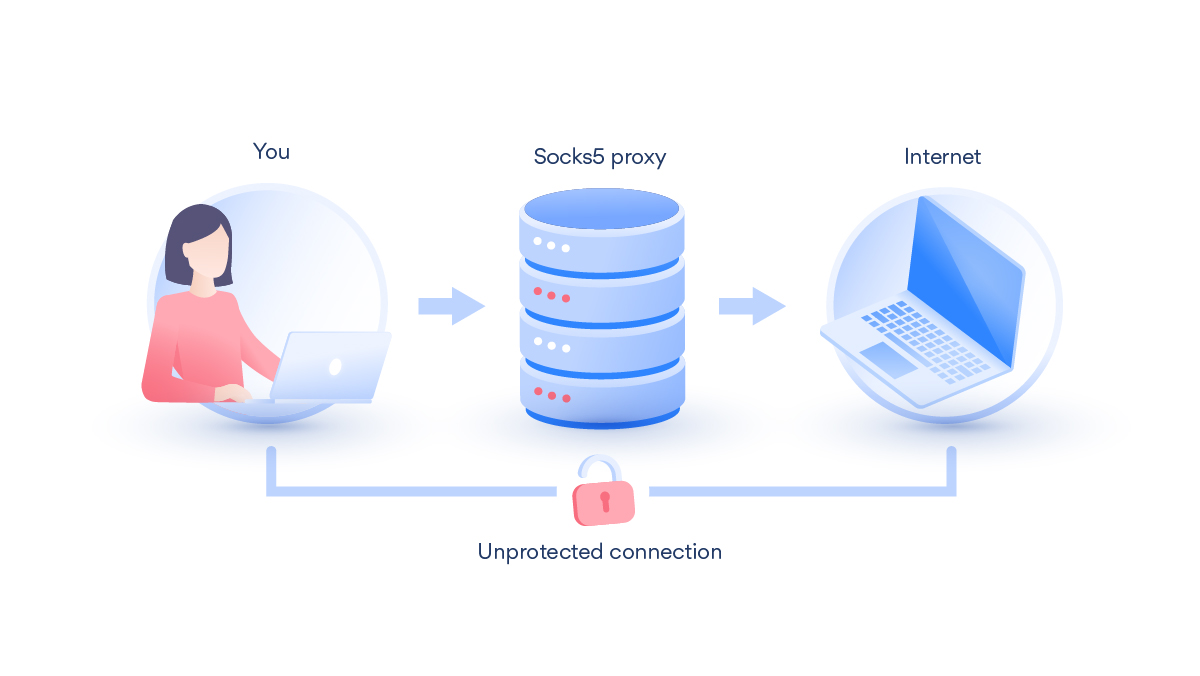How to Setup Your Own SOCKS5 on VPS. In this latest article, you will learn how to set up your very own SOCKS5 on a VPS. Proxies (SOCKS5) and VPNs differ in nature, while they provide some of the same services.
A VPN routes all of the network traffic over a customer computer through a canal to some other machine computer.
No individual program configuration is required. In contrast, using a proxy requires each application to be individually configured to ensure its traffic experiences the proxy.
The intent of a VPN is to let a remote client computer get into network resources in some other location as if it were literally positioned in the same office.
One of those network resources can be gaining access to the internet, which masks the IP address of the remote computer. That is why VPNs have just lately seen a surge in popularity as both a geo-obfuscation tool to gain access to content not available in the client computer’s country (such as US Netflix from outside the US) and as a personal privacy tool to prevent your original IP address from being discovered.
A server proxy is somewhat more limited in that it cannot provide gain access to remote resources, but it can mask your IP address and provide geo-obfuscation services.
TYPES OF PROXIES
The two most common types of proxies are HTTP (HyperText Transfer Protocol) and SOCKS5 (Secure Sockets 5).
The SOCKS4 protocol does not support UDP or authentication. The latest SOCKS5 and HTTP unblock proxies differ in the following ways:
In general conditions, the HTTP proxy can only proxy HTTP (TCP) traffic, whereas a SOCKS5 proxy can handle any sort of traffic using either TCP or UDP.
A SOCKS5 proxy does not translate the traffic sent through it in any way, whereas an HTTP web proxy typically does. Therefore, a SOCKS5 proxy is far more general and can be used with more applications.
A powerful HTTP proxy can only be used with HTTP clients such as a web browser, but since it is aware of the HTTP content, it can do clever things such as caching or rewriting headers besides the proxying service.
For the goal of anonymity and level of privacy, a SOCKS5 proxy is an improved choice since it can be put to more general use.

In this post, we’ll look at setting up the easiest kind of SOCKS5 proxy using SSH (Secure Shell). We’ll set up an inexpensive VPS at Digital Ocean and configure the SSH server to make up a few client applications to use the web proxy.
PROXY SERVER STORAGE SPACE SETUP
Almost any type of VPS is useful for this since all you need is non-root SSH access, but using a web hosting bank account as proxy hardware may violate some hosts’ conditions of service.
Digital Ocean is a recognised and affordable cloud company and one with their $5 per month servers will work well for an SSH proxy.
Digital Ocean is a Virtual Private Cloud (VPC) provider, meaning that you don’t buy a particular server; rather, you create an account and the website links a payment method to it.
Once you’ve done that, you can create as many virtual web servers as you want. VPCs (virtual private clouds) tend to offer more control over system technical specs and can cost much less than a traditional VPS.
To start off, first, you’ll need to create a droplet, click on the Tiny droplets menu item, and make a few selections to customise it.
We’ve picked Ubuntu 20.04 LTS (Long Term Support) as the operating system and the smallest (least expensive) size.
Droplets are recharged per hour. The least expensive option will work well and only cost about $5 for the complete month.

You’ll now want to select a place for your droplet. Remember that when you are using your proxy, your traffic will be seen as arriving from the IP addresses of your Droplet.
If perhaps you’re setting up a proxy specifically for geo-obfuscation purposes, you should go with a location in or near the country that you wish to appear to be from.
Once your Droplet has been created, you will receive a confirmation email from Digital Ocean with its IP address and login information.
OPEN-SSH CONFIGURATION
SSH is already installed and ready to use in Digital Ocean droplets.
The fundamental user’s password is supplied in the everyone should be open email, so there’s no additional setup required on the server.
However, the best practice is to modify the default password and create a user, particularly for proxying.
Connect to the Scrap using SSH on macOS (OSX) or Linux
Open up a terminal and type the following command to hook up using the IP address from your email.
You will be encouraged to accept the key. Enter the password from your welcome email, and then change the security password.

Should you be using Windows, you will need an SSH customer to hook up to your Droplet.
One of the most widely used SSH clients is PuTTY, so connect to it using PuTTY on house windows.
Get into the IP address of your droplet into the host name field and click on the Open button.
PuTTY will hook up to the server to make sure the server is up to date and there are no pending updates.
Outdated software is a leading cause of system hacks. The command to update Ubuntu is:
- apt-get update
Once the system is up to date, you are now left with your very own SOCKS5 on your VPS.

